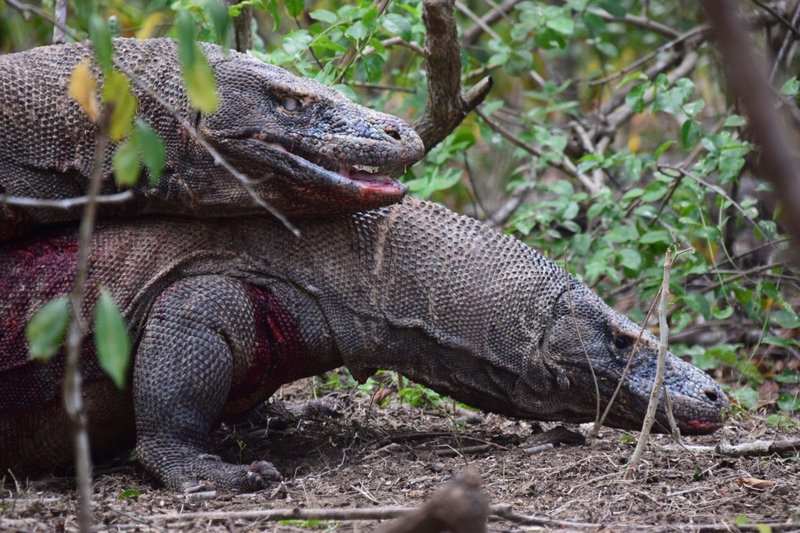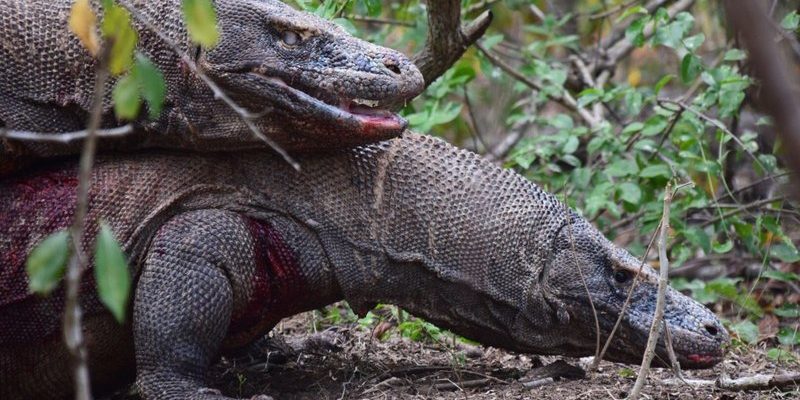
The Komodo dragon’s breeding behavior is a mix of instinctual rituals and strategic choices. Think of it like a complex dance where both partners must know their steps to ensure the survival of their species. From courtship to egg-laying, these dragons exhibit behaviors that showcase their adaptability and survival skills. So, let’s dive into the fascinating world of Komodo dragons and explore their breeding and reproductive behaviors more closely.
Understanding Komodo Dragon Reproduction
The reproductive cycle of Komodo dragons is a well-timed event that usually occurs during the dry season, between April and August. During this time, the male Komodo dragons become particularly active in their pursuit of a mate. But how exactly do these impressive reptiles go about choosing their partners? It often starts with a display of strength and dominance. Males may engage in wrestling matches to assert their size and prowess. This behavior, while seemingly aggressive, is crucial for establishing hierarchy and ensuring that the strongest genes are passed on to the next generation.
Once a male successfully attracts a female, a more intimate courtship ritual begins. You might think of this as a courtship dance, where the male will display various behaviors, such as licking the female or engaging in gentle nudging. If the female is receptive, the pair will mate, which can last several hours. This process is critical as it ensures genetic diversity, helping the species adapt to changing environments over time.
Egg-Laying and Nesting Behavior
After mating, the female Komodo dragon begins the process of preparing for egg-laying. Interestingly, a female can lay anywhere from 15 to 30 eggs in a single clutch. This is similar to how some birds prepare nests, but in the case of Komodo dragons, they look for secure locations, often digging holes in sandy or soft soil. Here’s the thing: these dragons are also known to use abandoned nests of other species, which adds an element of resourcefulness to their behavior.
Once the eggs are laid, the female covers them with soil or leaves to protect them from predators. This nesting behavior highlights the maternal instincts that Komodo dragons possess, a trait that might surprise those who think of reptiles as entirely self-sufficient. The eggs incubate for about 7 to 8 months before hatching, and during this time, the female remains vigilant, often guarding the nest until the hatchlings emerge.
Parental Care and Hatchlings’ Survival
Unlike many mammals, female Komodo dragons do not care for their young after they hatch. Instead, their initial nurturing comes from laying a safe and hidden clutch of eggs. Once the hatchlings break free from their eggs, they are on their own. This is a crucial point in their life cycle since juvenile dragons are at high risk from predators, including their own parents. You might wonder how these tiny dragons survive in such a perilous environment.
Hatchlings instinctively climb trees to escape potential threats. This arboreal lifestyle offers a safe haven from larger Komodo dragons and other predators. Leaving the ground allows them to find food sources such as insects, small mammals, and birds. This adaptation is vital for their survival and shows the resilience and instinctual behaviors that Komodo dragons have developed over time.
Mating Strategies and Competition
Mating for Komodo dragons is more than just finding a partner; it’s about competing for the best genes. Males can often have to fight other males for the opportunity to mate. This competition can be fierce, and the strongest males usually succeed in attracting females. You might think of it as nature’s way of ensuring that the fittest survive and pass along their genes.
Interestingly, some females are known to be selective when choosing a mate. They may prefer larger males or those with more vibrant coloration, which can indicate good health and strong genetics. This selective breeding is crucial for maintaining the health and vigor of the species, which is something we see across various animal species.
Unique Reproductive Adaptations
Komodo dragons show some remarkable traits when it comes to reproduction. One of these is a phenomenon called parthenogenesis, where a female can reproduce without mating. This is fascinating because it allows female dragons to produce offspring even when no males are present, ensuring the survival of their lineage. This adaptation comes in handy, especially in isolated environments like the islands they inhabit.
Additionally, the ability of Komodo dragons to switch between sexual reproduction and parthenogenesis is a unique survival strategy. It’s like having a backup plan in nature, enabling them to thrive in conditions where mates may not always be available. This flexibility in reproductive strategies speaks volumes about the adaptability of these legendary creatures.
The Role of Habitat in Reproductive Success
The environment where Komodo dragons live plays a significant role in their breeding success. They primarily inhabit low-lying forests, savannas, and scrublands on a few Indonesian islands. These habitats provide ample food sources and nesting locations, but they also expose the dragons to various challenges, including changing weather conditions and human encroachment.
Successful breeding relies on maintaining healthy habitats for these reptiles. Conservation efforts focus on protecting their environments to ensure that these magnificent creatures can continue their reproductive cycles. Healthy ecosystems support not only the Komodo dragons but also the diverse collection of flora and fauna that make their homes.
Conservation and Future of Komodo Dragon Reproduction
As intriguing as the breeding and reproductive behaviors of the Komodo dragon are, they face significant threats from habitat loss and climate change. Conservation efforts are crucial to ensure these magnificent reptiles thrive for generations to come. Protecting their nesting sites and ensuring healthy ecosystems are steps that can help safeguard their future.
Organizations are working to raise awareness about the importance of preserving the Komodo dragon’s habitats. This includes promoting ecotourism and sustainable practices that benefit both the local communities and the dragons. The future of Komodo dragons depends on our awareness and actions to protect their breeding grounds and natural environments.
In conclusion, the breeding and reproductive behaviors of the Komodo dragon are fascinating examples of nature’s complexity. From their courtship rituals to unique adaptations, these reptiles offer plenty to marvel at. By understanding their reproductive strategies, we can appreciate their role in our ecosystem and the importance of protecting these incredible creatures. The Komodo dragon is much more than just a fearsome predator; it is a symbol of resilience and adaptability in the wild.

